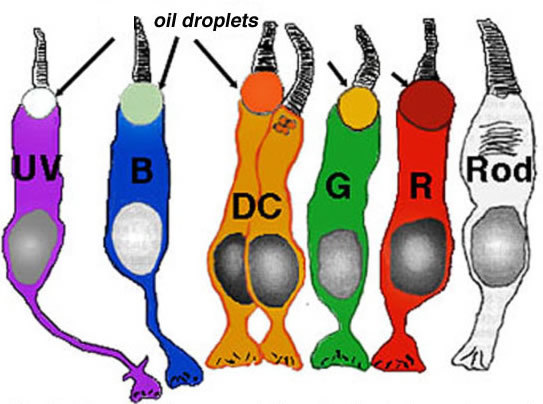Oil Droplets
Oil droplets are a feature of some photoreceptor cells, mainly in birds and reptiles. The ancestor of humans had oil droplets, but these were lost during the Nocturnal Bottleneck.
Oil droplets are positioned in front of the opsins, so light entering the photoreceptor must pass through the oil droplet before it is detected. Some oil droplets are colored, while others appear colorless (to a human observer).
Many have theorized that different colors of oil droplets could be a way to facilitate color vision instead of requiring separate classes of opsins, but this strategy has never been observed.
The evolutionary advantage of oil droplets is not well-understood. They effectively reduce the overlap in spectral sensitivity between different opsin classes. This can be a benefit because it increases the number of colors that can be discriminated [Vorobyev 2003].
